Polvoron is a Filipino shortbread cookie made with toasted flour, powdered milk, butter, and sugar.
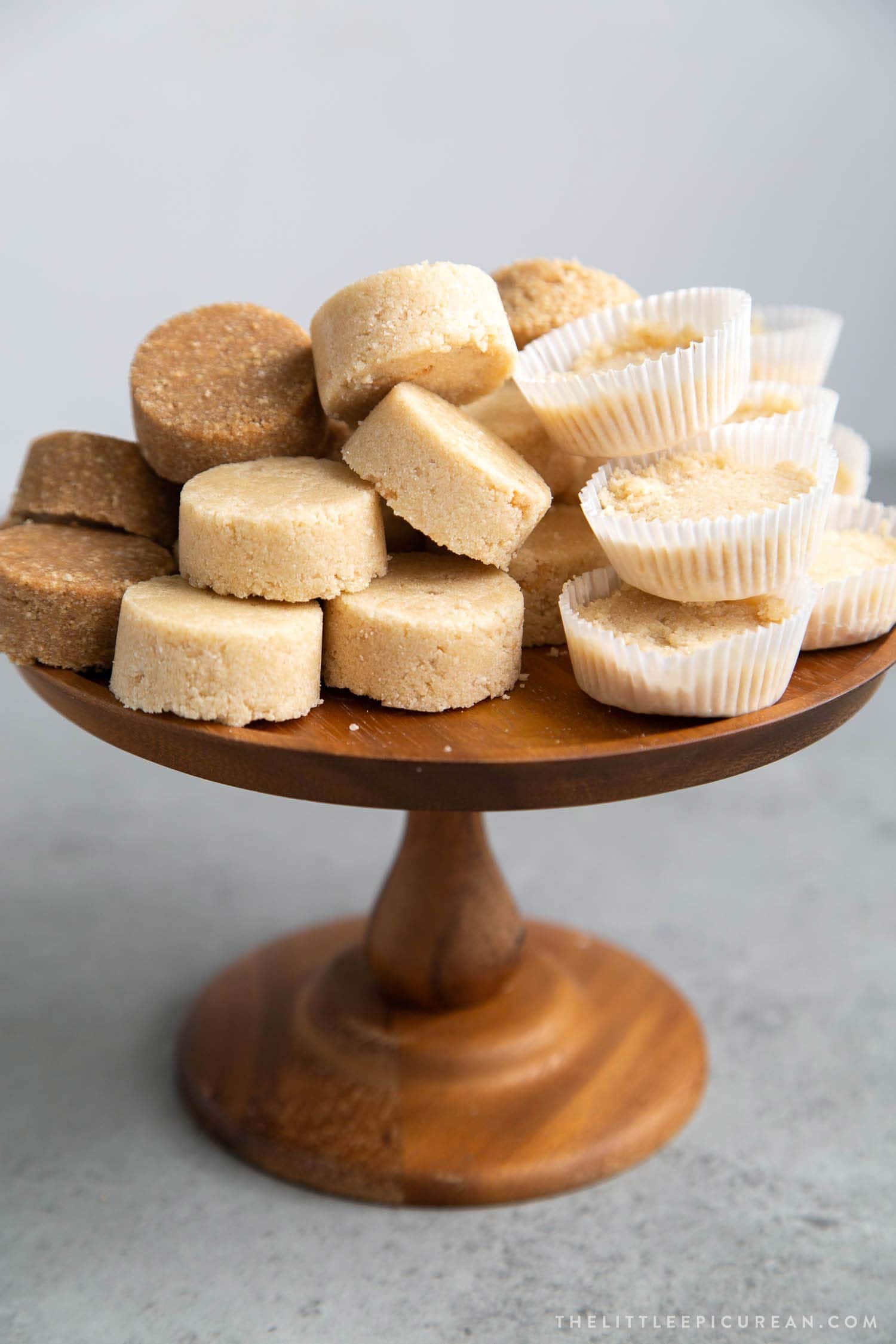
These bite-sized crunchy and crumbly cookies are sweet and addicting. Polvoron is commonly spelled pulburon or polboron.
It is also referred to as Filipino milk candies.
One cookie is never enough. You’ll want more after the first bite!
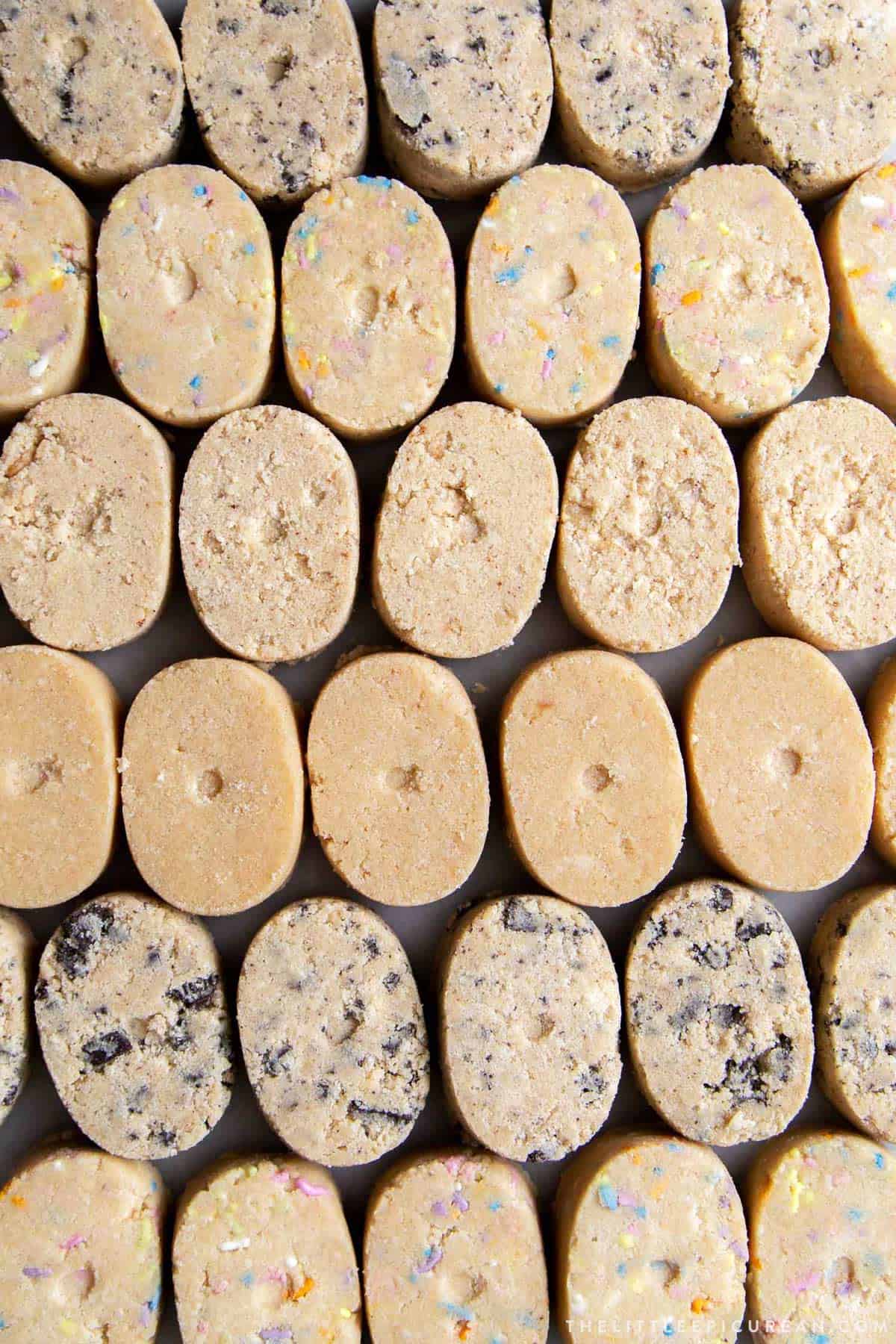
Table of Contents
Homemade Pulburon
These favorite Filipino treats are a variation of the Spanish polvorones. Polvorones are traditionally served during the Christmas season.
They are known for their crumbly texture. “Polvo” translates to powder or dust in Spanish. “Pulbo” in Tagalog also translate to powder.
How did a Spanish cookie end up in the Philippines? That’s easy to answer.
Spain controlled the Philippines for over three centuries. From 1521 until 1898, the Philippine Islands were under Spanish rule.
YES, over 300 years! During this time, the Philippines was given the name that we know as today.
The islands were collectively colonized and unified under the name Philippines in honor of King Philip II.
Prior to this, the different islands were independent states with their own languages, traditions, and governments.
History lesson over. In conclusion, the Spanish were in the Philippines for a very long time.
As a result, many foods have been translated using ingredients available in the Philippines. Many dishes were also adjusted to suit the palate of the people.
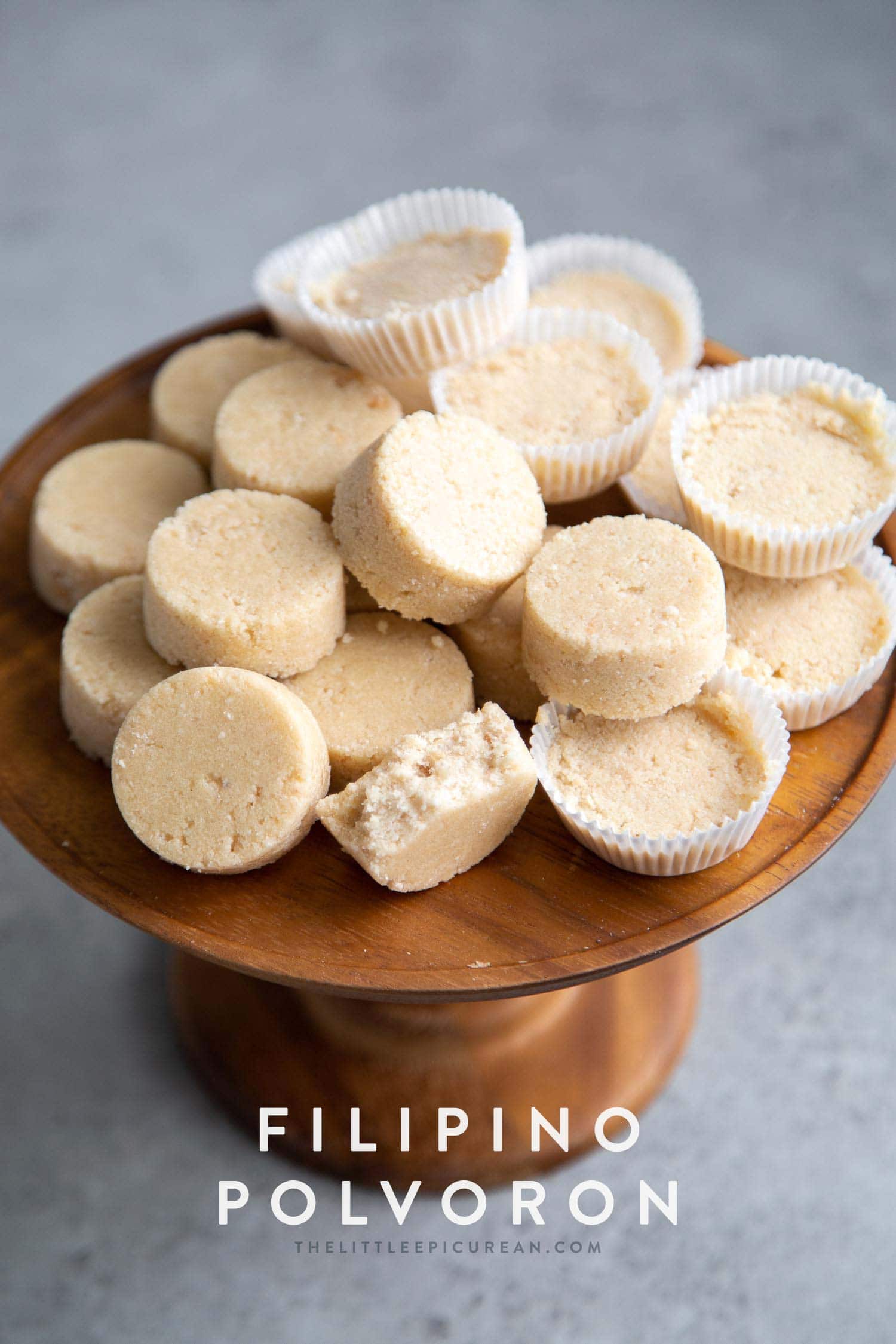
Is it easy to make polvoron cookies?
YES!
Just a handful of ingredients are needed to make these cookies.
These cookies are traditionally made with an oval shaped stamper (puncher). These are difficult to find and quite expensive to purchase online.
Luckily, I was able to purchase one at Seafood City Market for under $2.
Don’t have the oval stamper? Not to worry. I have included several options using more common kitchenware.
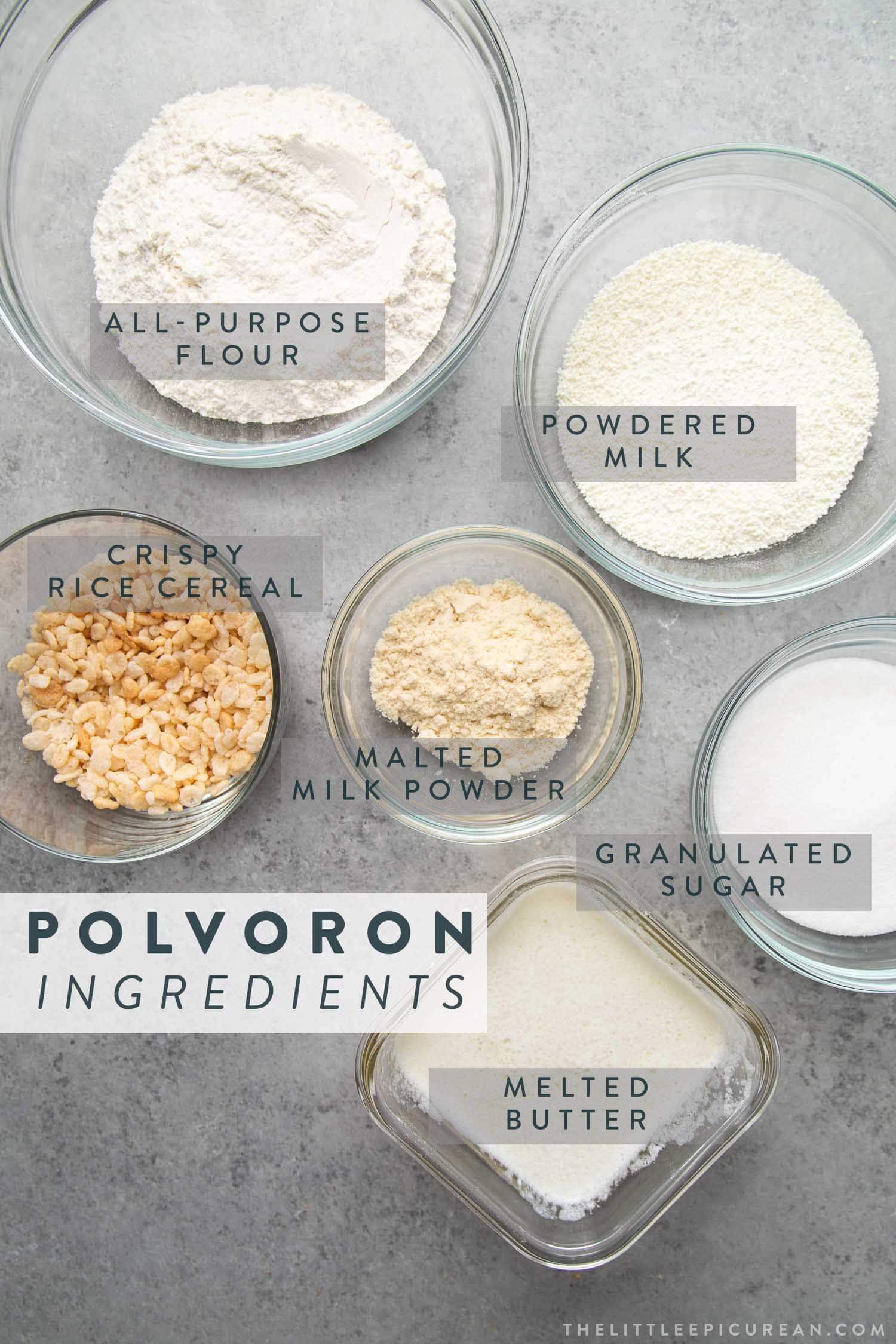
Required Ingredients vs Optional Mix-Ins
Toasted flour, powdered milk, sugar, and butter are required. Since this recipe uses such few ingredients, use the freshest high quality flour and butter you can find.
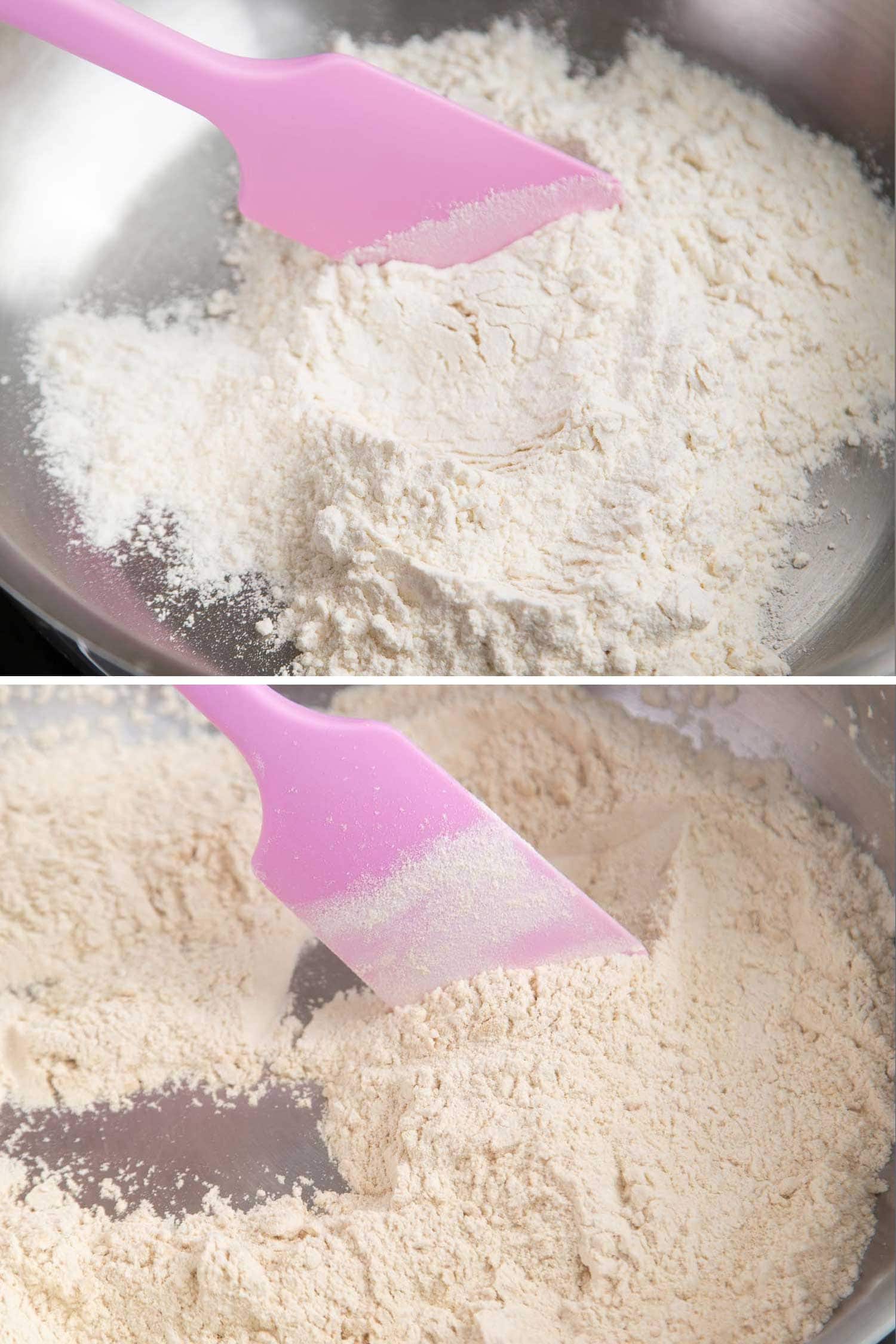
- Toasted Flour
Use plain all-purpose flour. Toasting the flour is a VERY IMPORTANT step.
First of all, you shouldn’t eat raw flour. It’s a raw ingredient that may contain harmful bacteria.
Toasting the flour provides flavor while also making the flour safe for consumption.
Toast the flour in a shallow skillet over medium heat. Stir the flour often to evenly distribute heat and prevent burning.
You may toast the flour to your liking from light tan to rich brown. However, be careful not to burn the flour.
- Powdered Milk
I highly recommend using whole milk powder. I recommend Nestle Nido, Horizon Organic, and Judee’s.
The most readily available dry milk is instant nonfat milk.
Nestle Carnation instant nonfat dry milk is the one you’ll find at most American supermarkets. Bob’s Red Mill also sells a nonfat milk version.
These work just fine. However, they won’t provide the same richness and creaminess as whole milk.
Whatever milk powder you choose to use, be sure it’s powdery. Some come in big flakes. Pulse the coarse milk powder in a food processor until the consistency is more powder like.
- Unsalted Butter
Butter is the binder that holds all the dry ingredients together. Use high quality butter.
You will taste the difference between using fresh butter versus butter that has been sitting in the fridge for some time.
Though not recommended, the recipe will also work with margarine, vegan butters, and shortening. Shelf stable polvoron is often made with shortening.
Optional Ingredients
- Malted Milk Powder
- Crispy Rice Cereal (or pinipig)
- Other mix-ins such as ube halaya, crushed Oreo cookies, sprinkles
- Nuts such as peanuts, pecans, or cashews (chopped or ground into powder)
I highly recommend adding malted milk powder. Though not traditional, it adds an additional toasty sweet flavor.
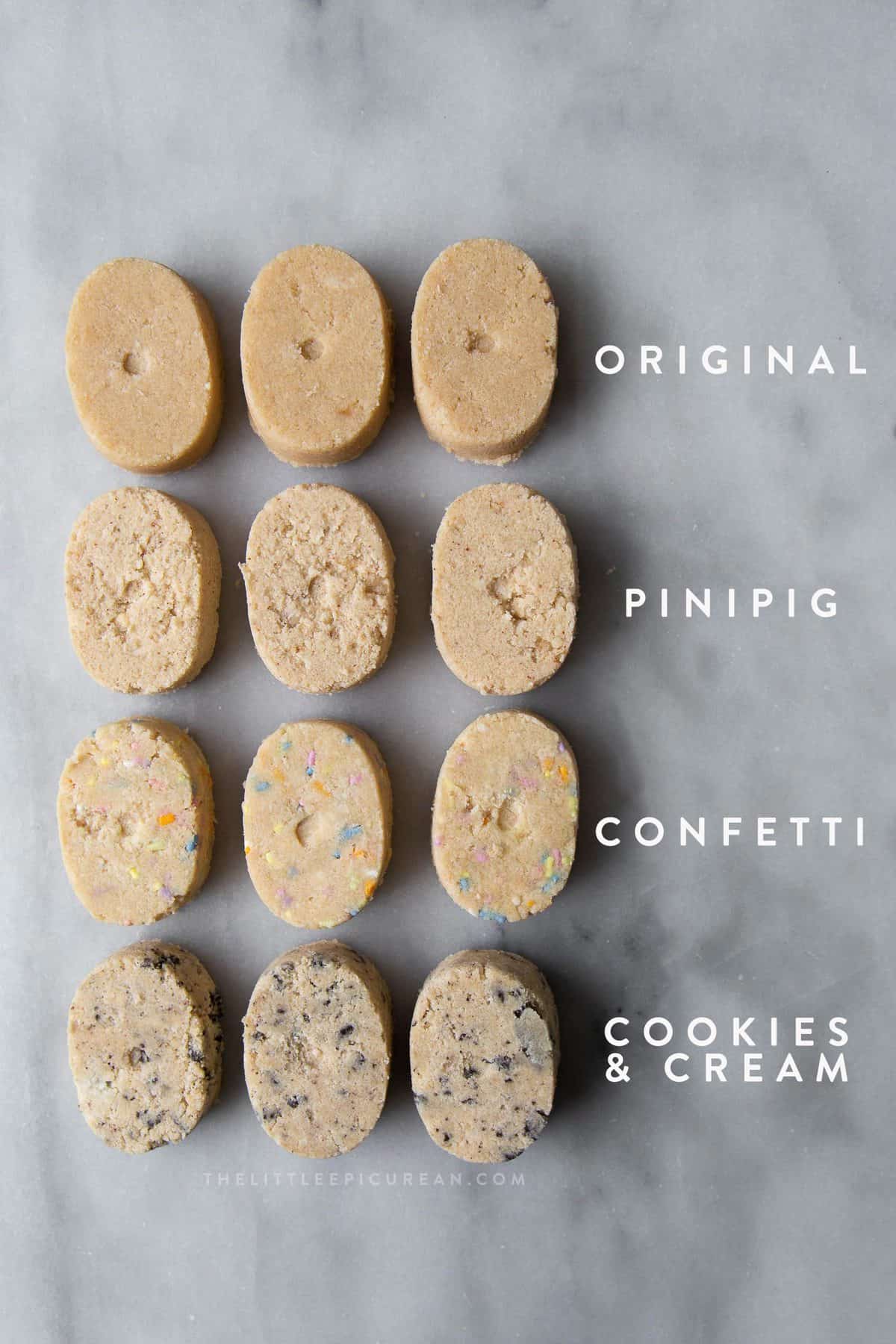
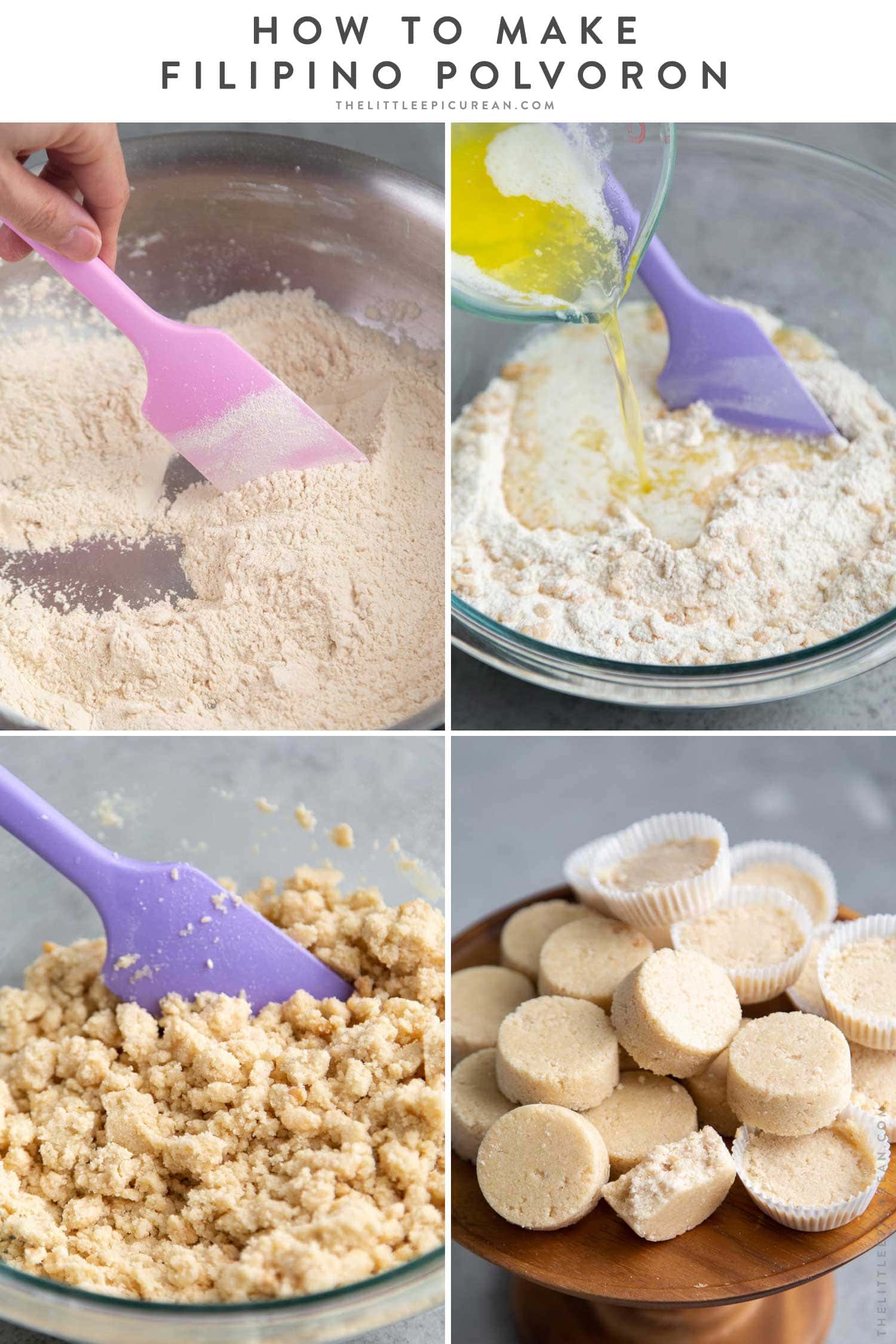
- Toast the flour. Mix flour with remaining dry ingredients.
- Add in warm melted butter.
- Combine ingredients together until mixture is crumbly.
- Shape cookies! Allow cookies to harden at room temperature, or quicken the process by using the fridge or freezer.
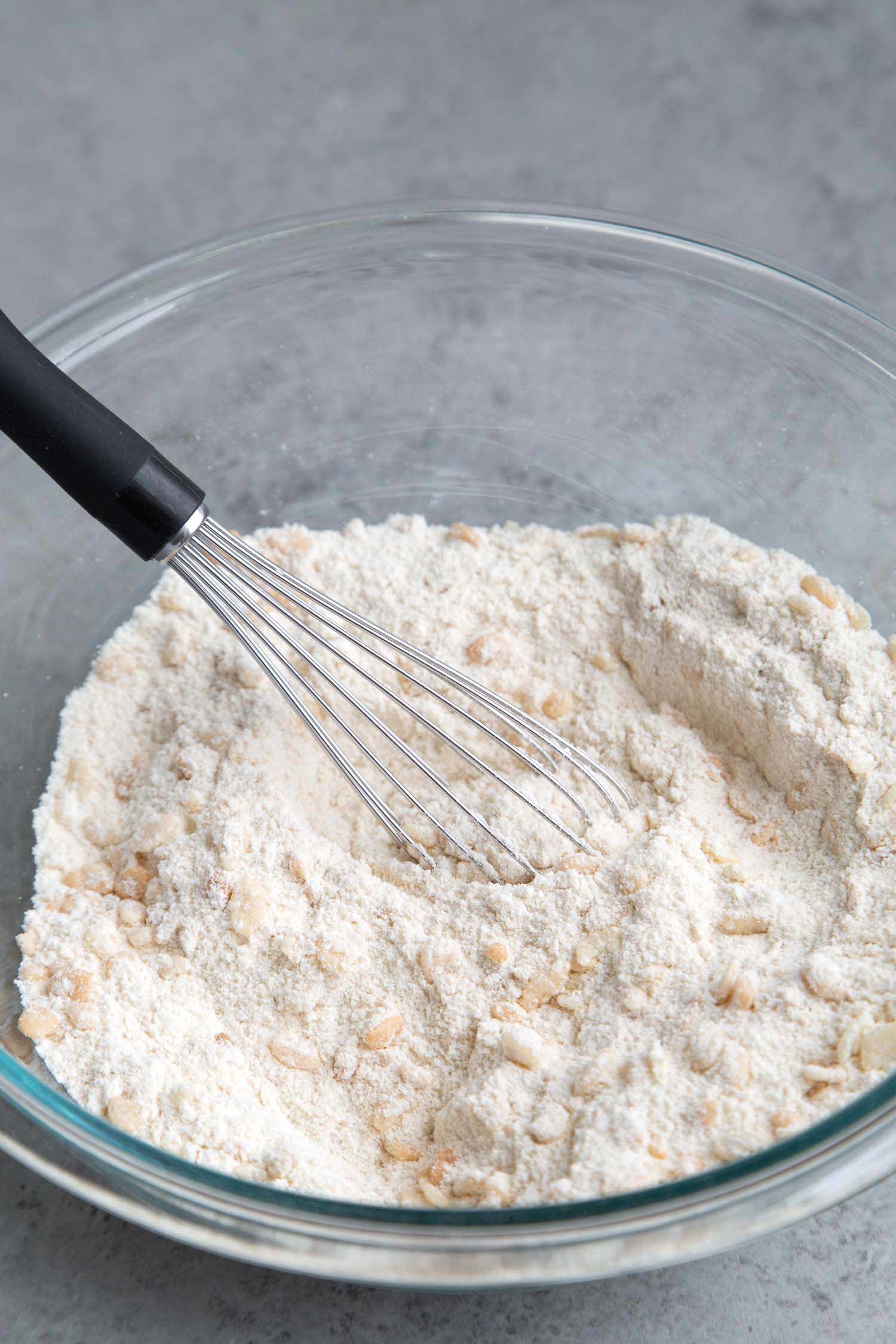
Pinipig Alternative
Pinipig is toasted young rice. It is also labeled as pounded young rice or young sweet rice flakes.
It adds a crunchy texture to desserts.
Unfortunately, pinipig can be difficult to find in the United States. My local Filipino market carries a frozen version during the holidays.
You might be able to find pinipig in Thai or Vietnamese markets.
To save yourself the trouble, I suggest the next best alternative- rice crispy cereal!
Yes, the same cereal you used to make rice crispy treats. It provides a similar crunchy texture and flavor.
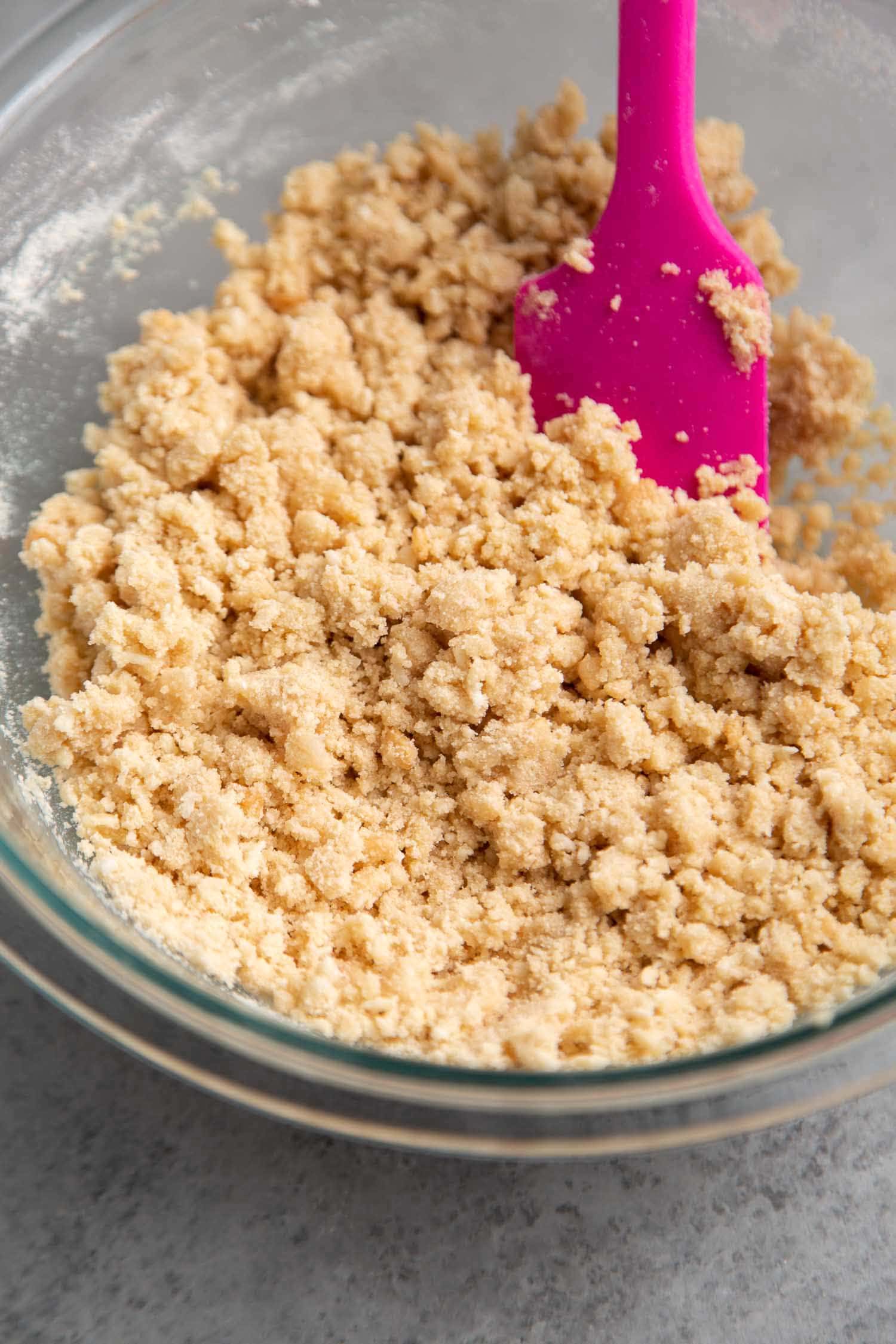
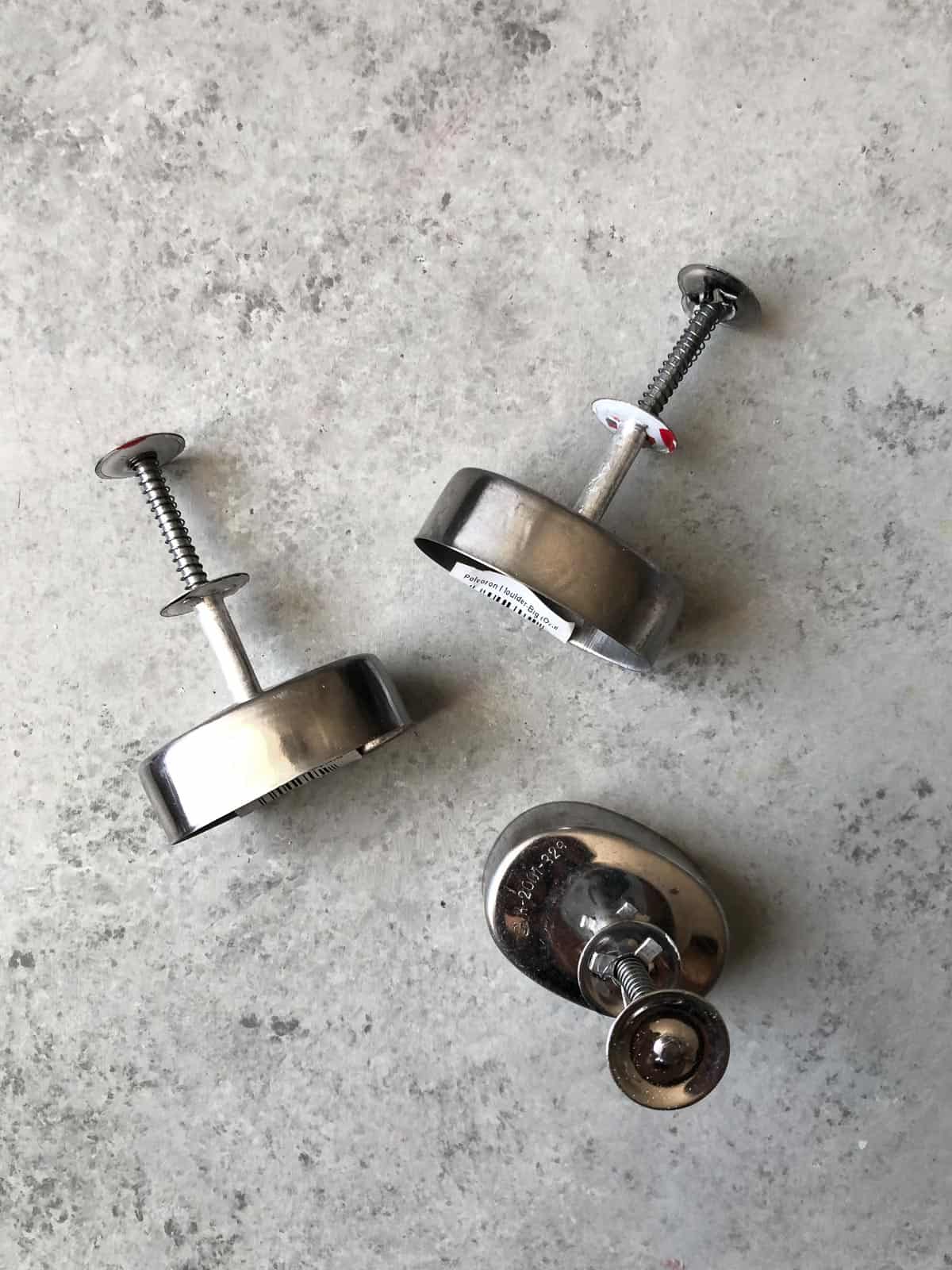
Special Oval Stampers and Other Alternatives
Classic polvoron is shaped into ovals. These oval shaped stampers (punchers) are difficult to find in the United States.
The oval stampers for sale online through Amazon and other retailers are quite expensive.
I was lucky to find some at Seafood City Market for under $2 a piece. Unfortunately, they are very poorly made and won’t last very long.
I’ve tested this recipe using two other alternatives:
- Silicone molds
- Mini cupcake tins
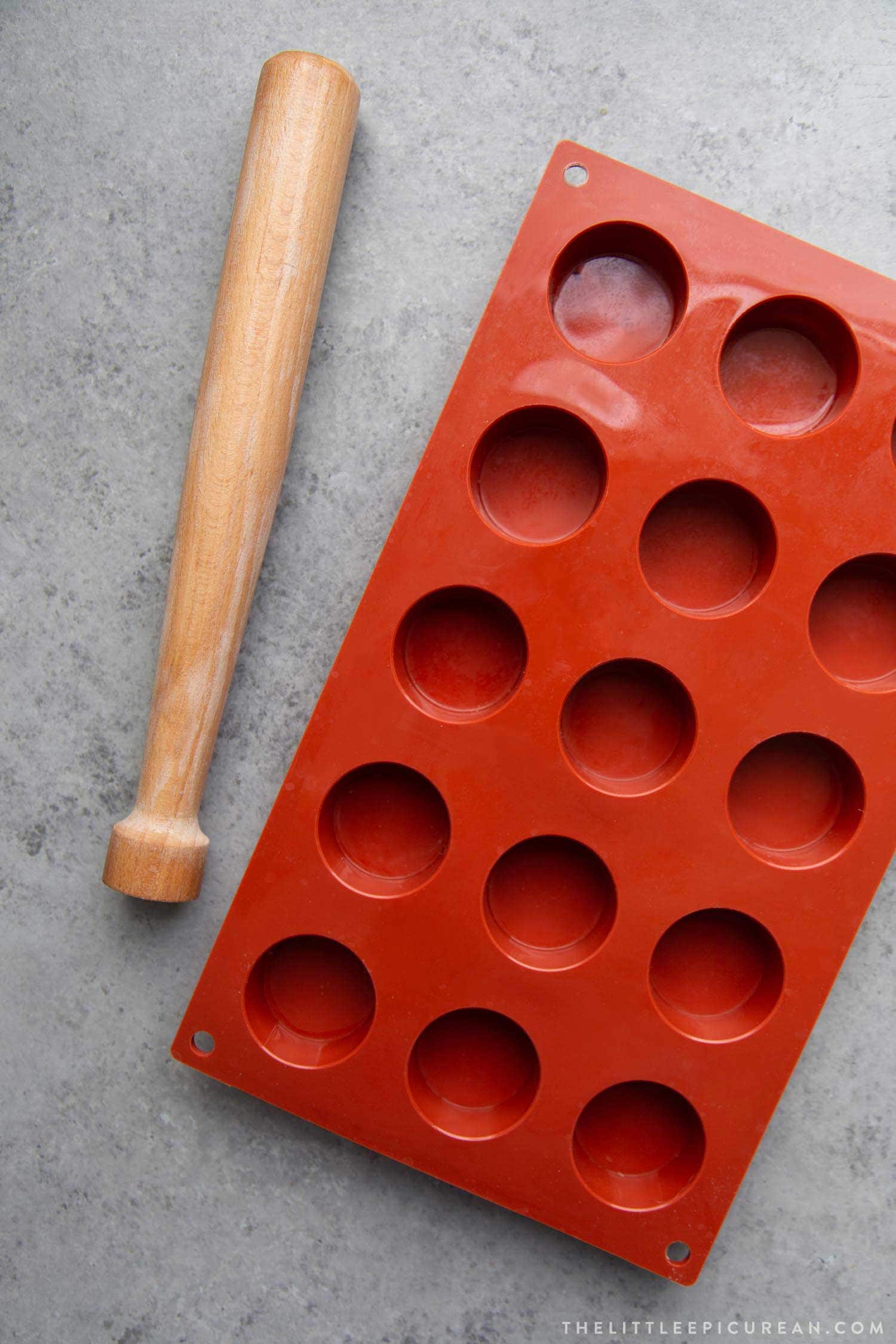
Silicone Molds
There are a wide variety of silicone molds to choose from. They come in all different shapes and sizes.
Find silicone molds at restaurant supply stores (such as Chef’s Toys, JB Prince, or Restaurant Depot) or bakers supply stores (such as Baker’s Bodega).
And of course, you can find a wide selection through Amazon.
Here are a few options from Amazon: small round discs, variety cylinder mold pack, or oval cavities.
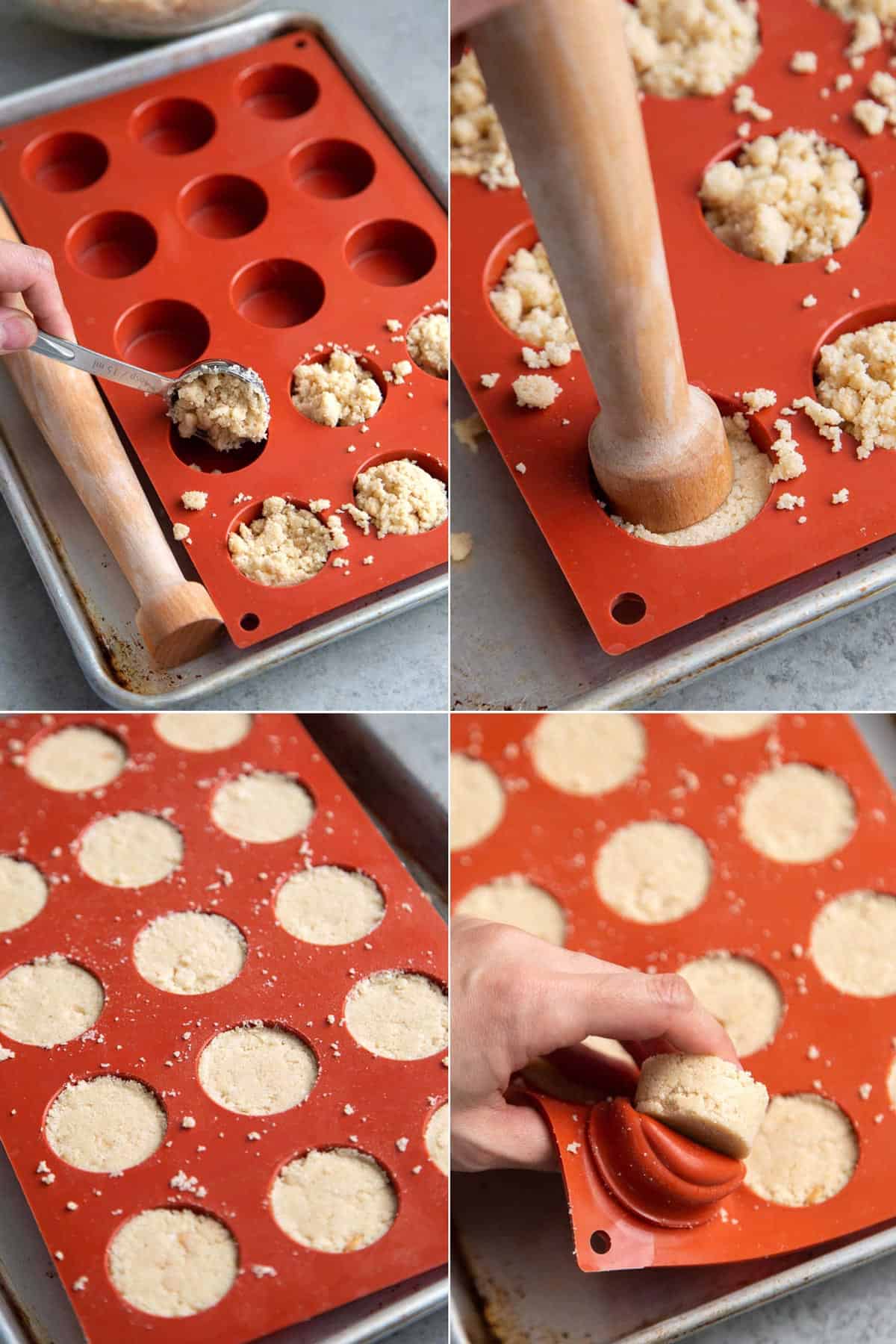
How to use flexible silicone molds for polvoron
You will need a flat surface, tablespoon, and dough tamper.
- Place silicone mold on a flat surface such as a baking sheet. Spoon desired amount of cookie dough into mold.
- Use a dough tamper to compress dough into a compact disc.
- Allow mixture to harden at room temperature. Or, quicken the process by placing the mold in the fridge or freezer.
- Pop formed cookies out of the mold and enjoy!
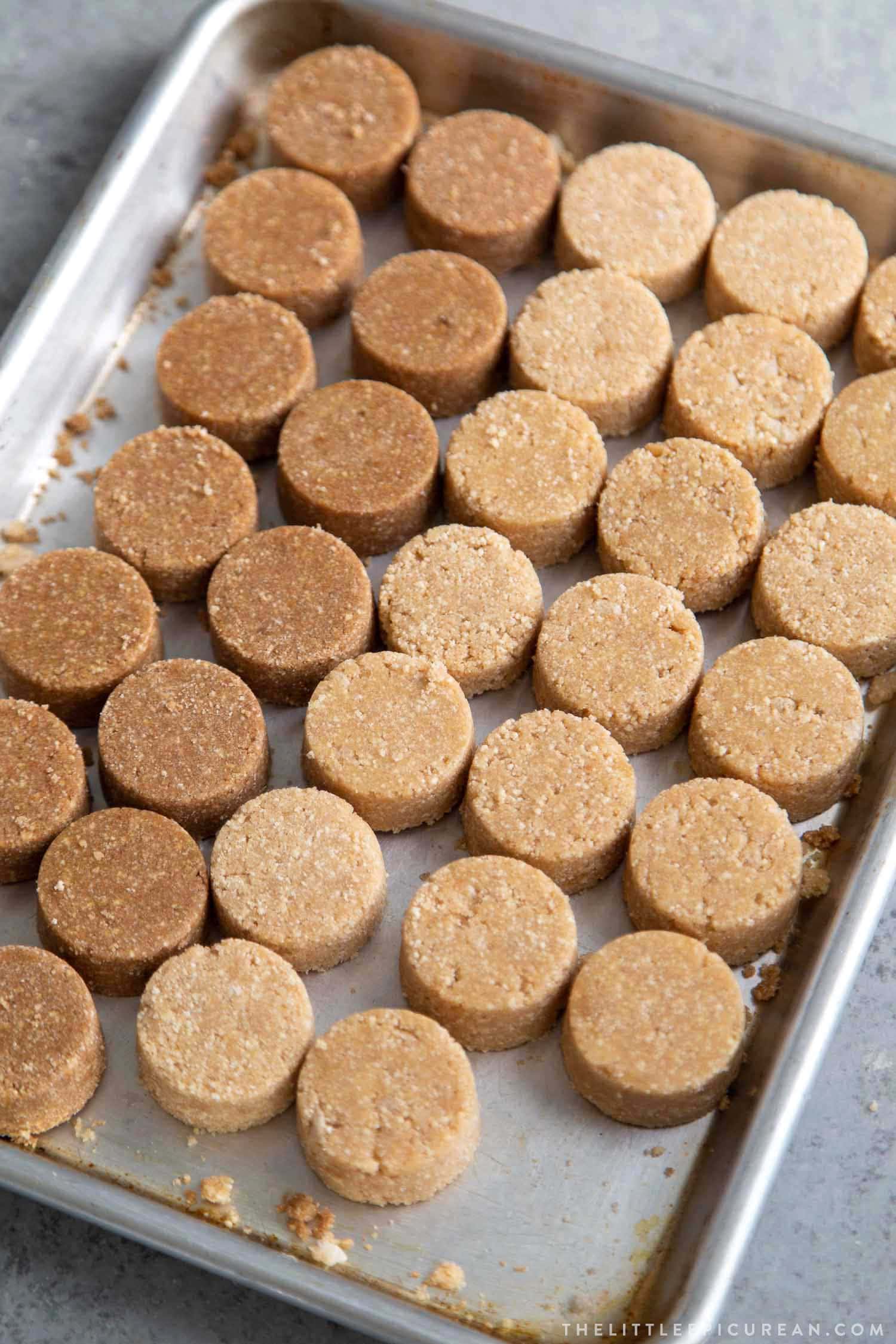
See the difference in color photographed above? The color is dependent on how much you toast the flour.
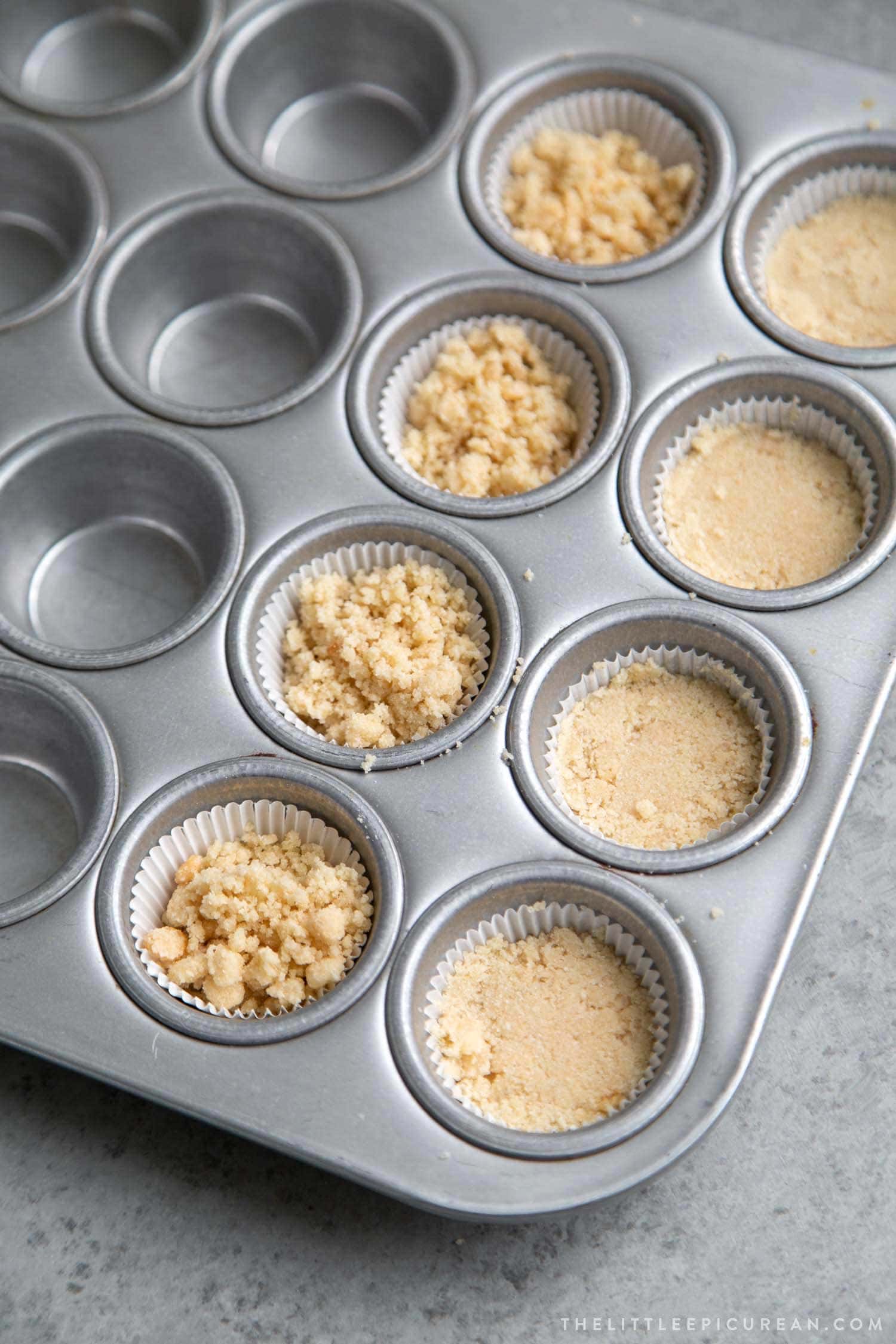
Mini Cupcake Pan
Use a mini cupcake pan or mini muffin tin. They usually have 24-cup (cavities) per tray. These are available in traditional metal pans or new flexible silicone mats.
Use paper liners to easily unmold the shortbread cookies.
Line the muffin tin. Spoon in desired amount of cookie dough. Use a tamper to press and compact the cookie.
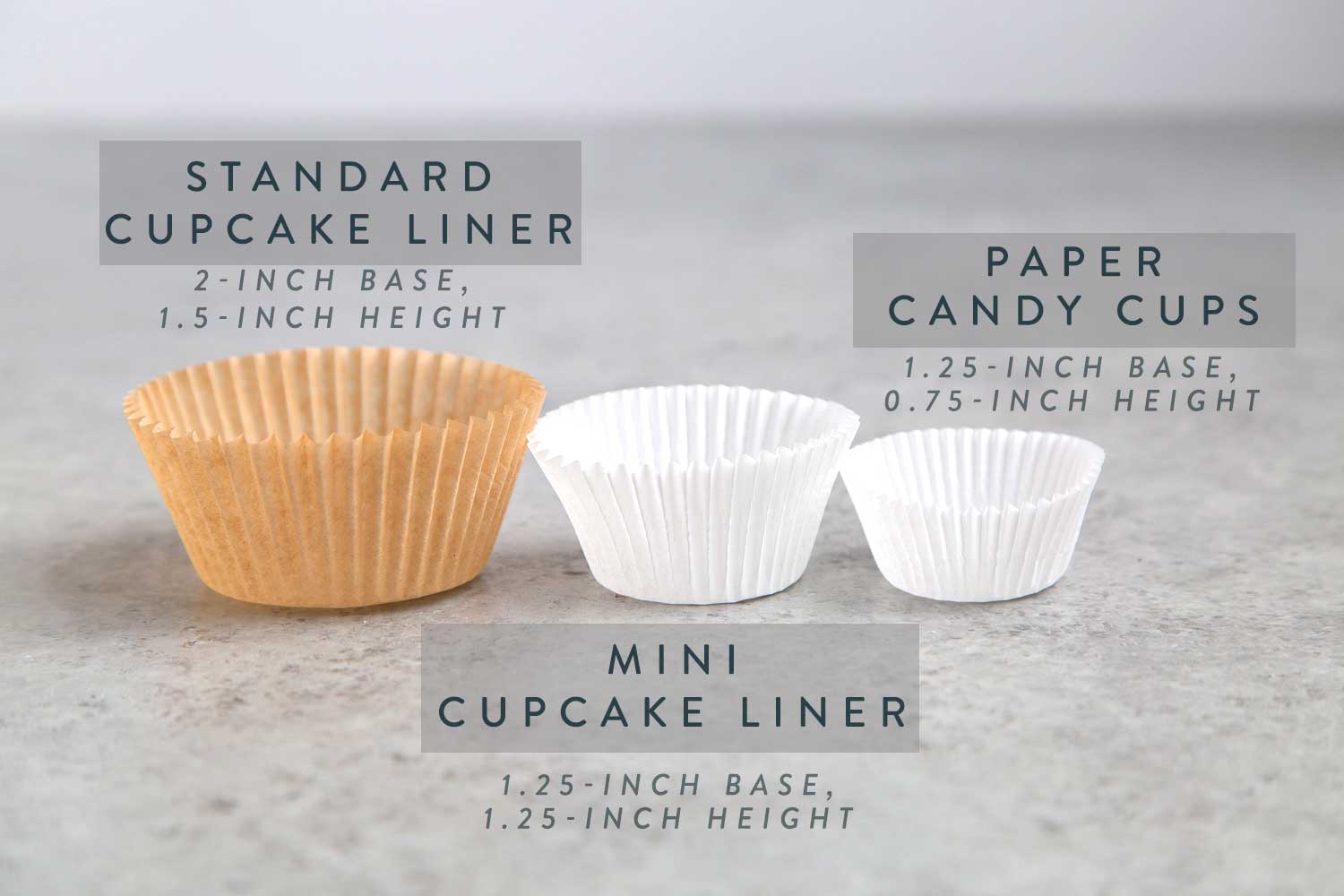
Cupcake Liners
Use mini liners specifically made for mini muffin pans. These are available in disposable paper options as well as reusable silicone ones.
Alternatively, paper candy cups also work. Paper candy cups are slightly shorter.
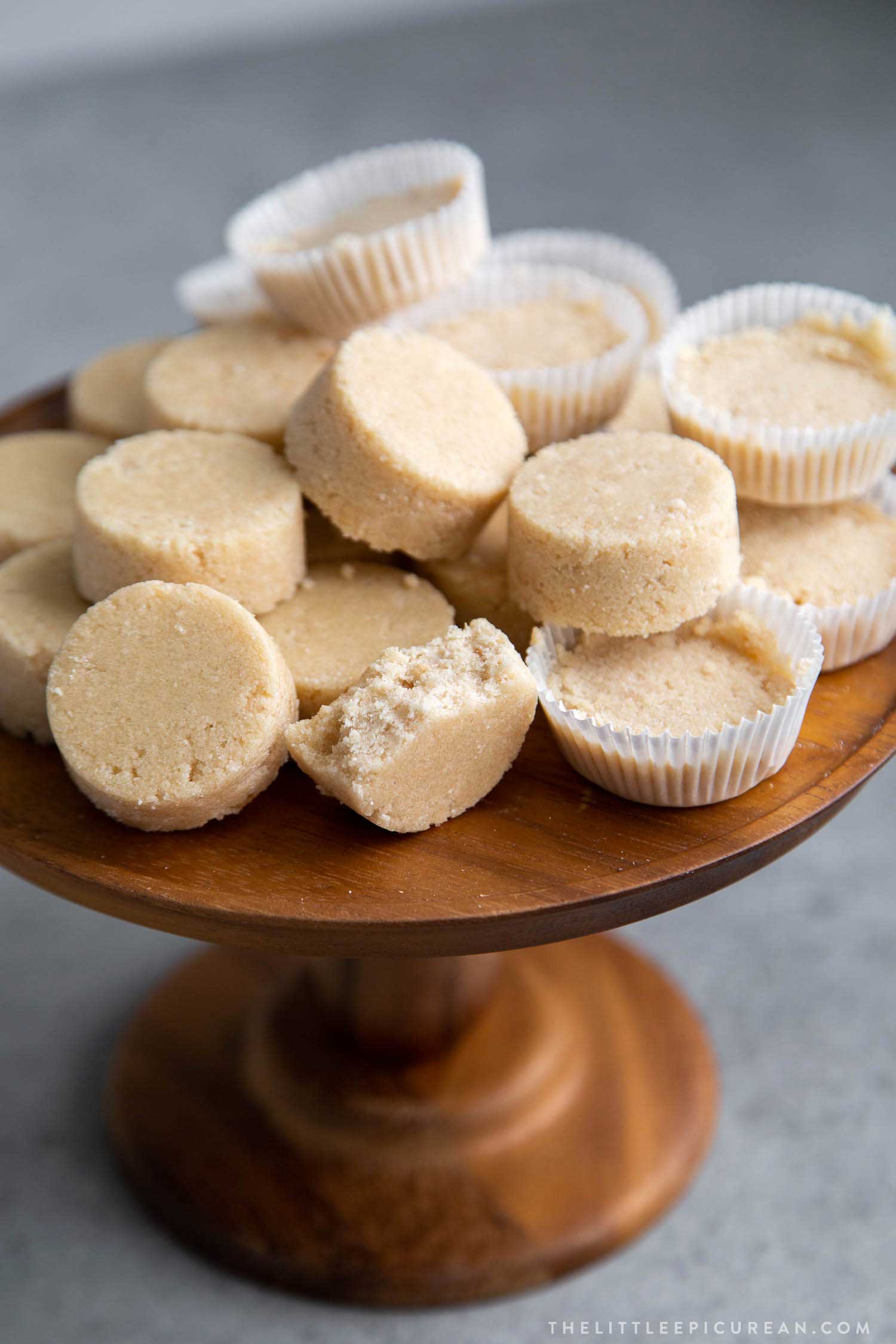
How to serve Filipino Polvoron
Serve these cookies at room temperature. The cookies should crumble and melt in your mouth.
Polvoron is offered as a snack or dessert. It is most popular during the holiday season (which in the Philippines runs from September through January) as well as celebration events such as Easter and birthdays.
If you are storing the polvoron in the fridge or freezer, allow cookies to warm to room temperature before enjoying.
The cookies will be rather hard directly out of the cold. The butter needs time to warm up and soften.
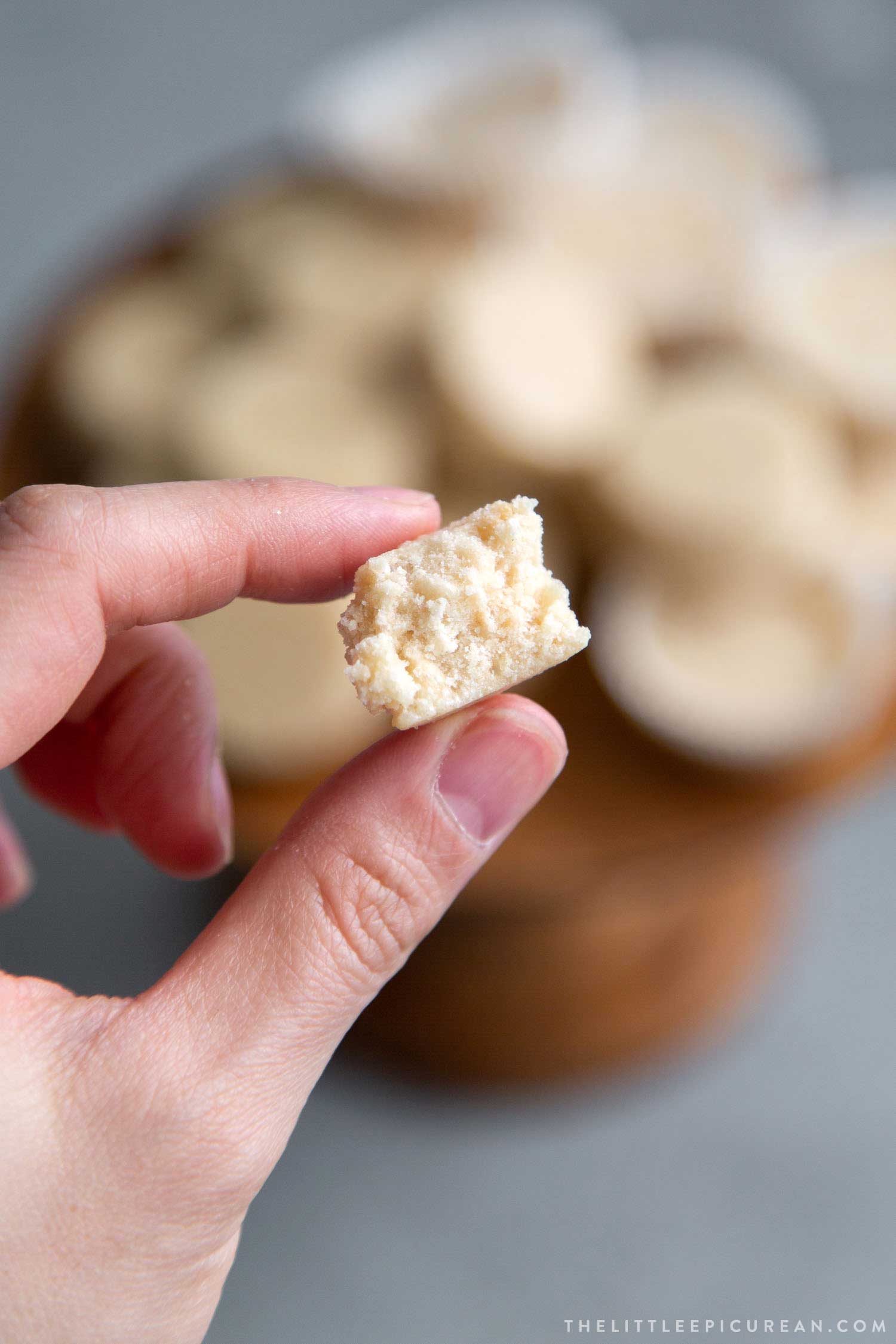
Shelf Life of Homemade Polvoron
To prolong the life of your cookies, store the homemade polvoron in an airtight container in the fridge or freezer. I suggest using a container like to prevent any unwanted smells from the fridge/freezer to seep into the butter cookies.
The cookies will last one month in the fridge. Or several months (about 3 months) in the freezer. Allow the cookies to come to room temperature before eating.
The popular Goldilock polvoron cookies are shelf-stable because they are made with shortening instead of butter.
Shortening is 100% pure fat while butter is about 80% fat. Butter contains about 15-20% moisture.
You may use margarine or shortening in place of butter. However, I DO NOT recommend. The resulting cookies won’t taste as flavorful.
Filipino Polvoron
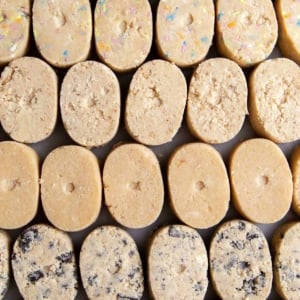
Ingredients
- 1 cup all-purpose flour, (130 g)
- ½ cup granulated sugar, (100 g)
- ½ cup powdered whole milk, (60 g)
- 3 Tbsp malted milk powder, (35 g) optional
- pinch kosher salt
- 10 Tbsp unsalted butter, (142 g) melted, warm
Optional Mix-Ins
- 60 grams chopped Oreo, (5 cookies chopped)
- 35 grams sprinkles, (about 3 Tbsp)
- 18 grams rice crispy cereal , (about ½ cup)
Instructions
- Set large shallow skillet over medium heat. Add flour. Stir flour often (using small whisk or silicone spatula) to evenly distribute heat and prevent burning.
- Continue to cook flour until it is fragrant and the color of the flour has turned tan. Toast the flour to your liking. Remove from heat and transfer flour to a heat safe bowl. Cool for 5-10 minutes.*Do not be alarmed. The flour may steam. Keep stirring to prevent it from burning.
- In another bowl, combine sugar, powdered milk, malted milk powder, and salt. Add this to slightly cooled flour mixture. Whisk to combine all the dry ingredients together.
- Add in warm melted butter. Use a spatula to fold ingredients together until mixture is crumbly.
- Use oval stamper to punch out cookies. Alternatively, use the silicone mold or mini cupcake method explained in the blog post.
- Place recently shaped oval cookies on a parchment lined baking sheet. Allow cookies to harden at room temperature. Or, quicken the process by using the fridge or freezer to cool the cookies.
Notes
- Since this recipe requires very few ingredients, it is very important to use high quality fresh ingredient.
- Use new flour (not one that has been sitting in your pantry for months.
- Use the best quality butter you can find. Don’t use butter that has been sitting in the fridge absorbing fridge aroma.
- Whole milk powder is highly recommended for the richest flavor. However, you may use instant non fat milk.
- If milk powder is flakey or coarse, process in a food process until it is a fine powder. The fine powder texture will ensure you have a crumbly, melt in your mouth cookie.
- To prolong the life of your cookies, store the homemade polvoron in an airtight container in the fridge or freezer. I suggest using a container like to prevent any unwanted smells from the fridge/freezer to seep into the butter cookies.
- The cookies will last one month in the fridge. Or several months (about 3 months) in the freezer. Allow the cookies to come to room temperature before eating.
- The popular Goldilocks polvoron cookies are shelf-stable because they are made with shortening instead of butter.
Nutrition
Nutrition information is automatically calculated, so should only be used as an approximation.
 Like this recipe? Rate & comment below!
Like this recipe? Rate & comment below!
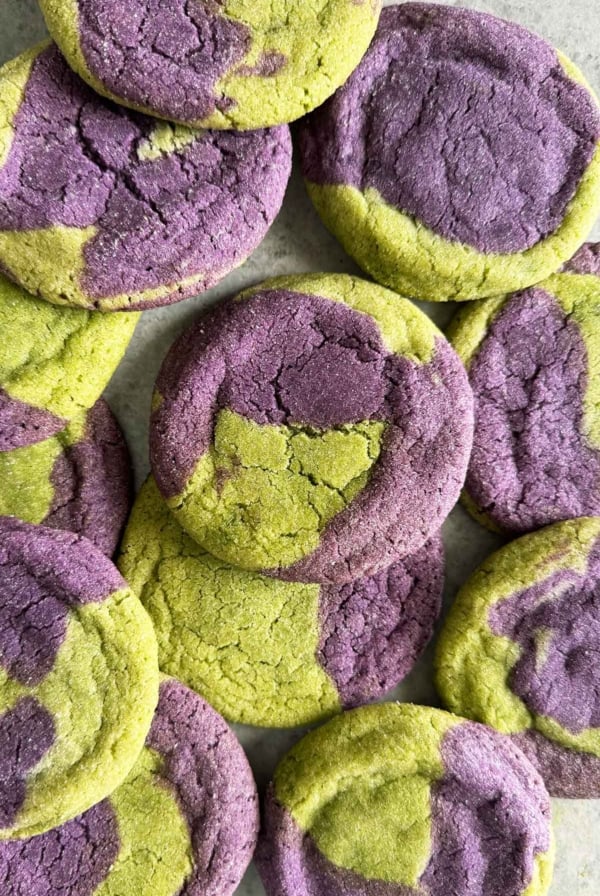
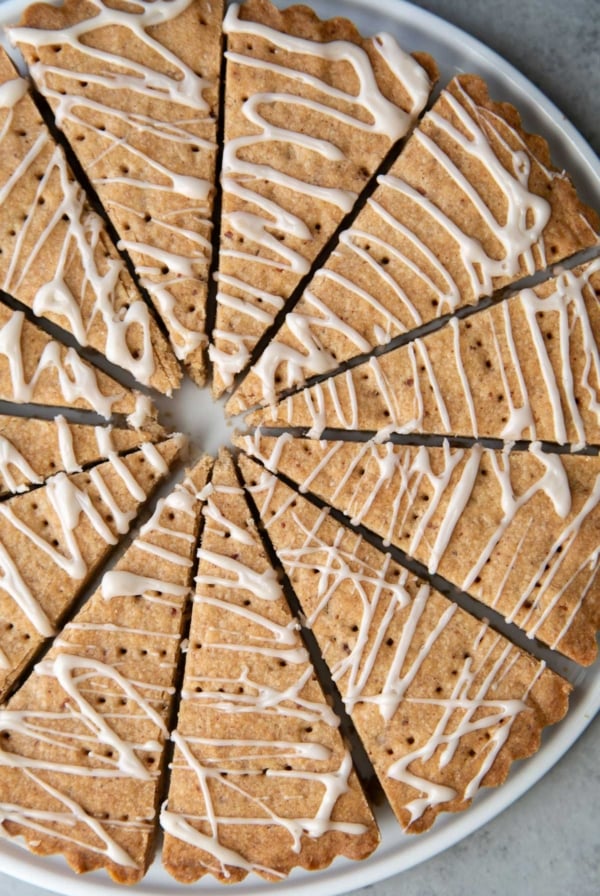
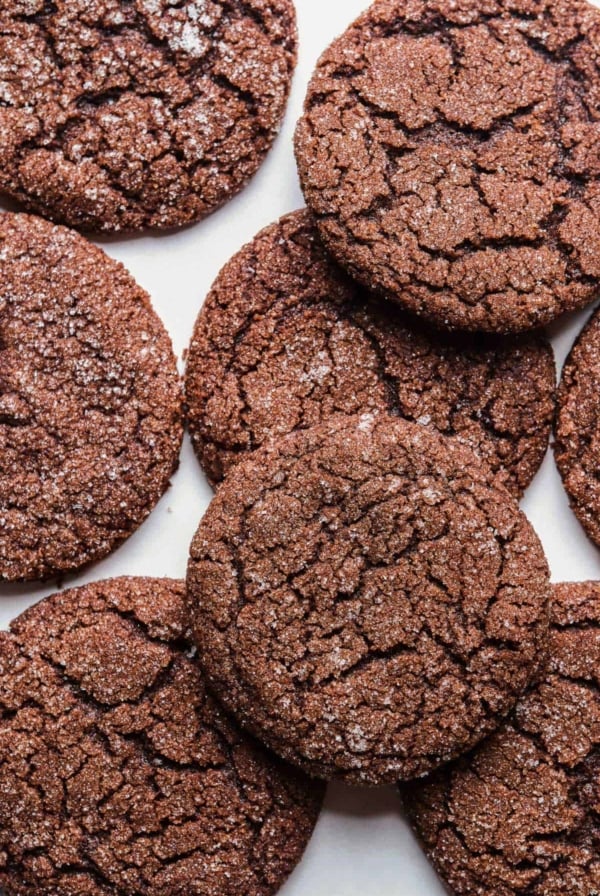





These are sooooo good! I first tasted them when a Filipino friend made them. I opted to brown the butter which i think gave it an even deeper, nutier taste.
Very Bad recipe
I love the details
Great recipe. Made cookie and cream version. Family loved it!
I have powdered ube and ube flavoring, do u have variations for this. All other ube is frozen here. Also will this work with ghee instead of butter.
I have yet shared the ube polvoron recipe. Follow the recipe as noted and add in 1/2 teaspoon of ube flavoring (or more depending on your taste). The recipe does work with ghee. However, I suggest sticking with butter.
The first time I had Polvoron was when I visited my friend in San Diego. I bought some at an Asian market to share with my family. I found this recipe, and decided to try making my own. I love this recipe! The Polvoron is much better than the store bought! I’ve made ones with sprinkles, rice crisps cereal, and instant coffee. Really like the coffee flavored ones! My Filipino friend was so impressed! ?
How much powdered coffee can I add to this recipe?
I suggest adding 1 1/2 Tbsp of instant coffee to the melted butter.
I was looking for something different…tired of cakes & cookies. This took NO time and was delicious. I used a mix of powdered milks (goat & buttermilk) and added a splash of vanilla. The tamper tip made it very easy. Thank you!
Hi! What are the directions to make Ube Polvoron?
Do you remove the cream from the Oreos?